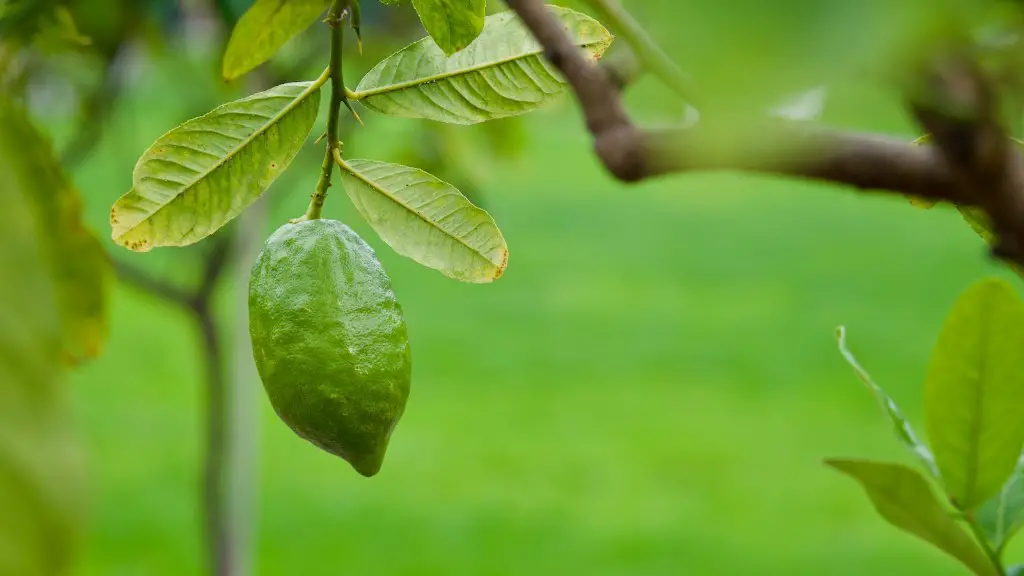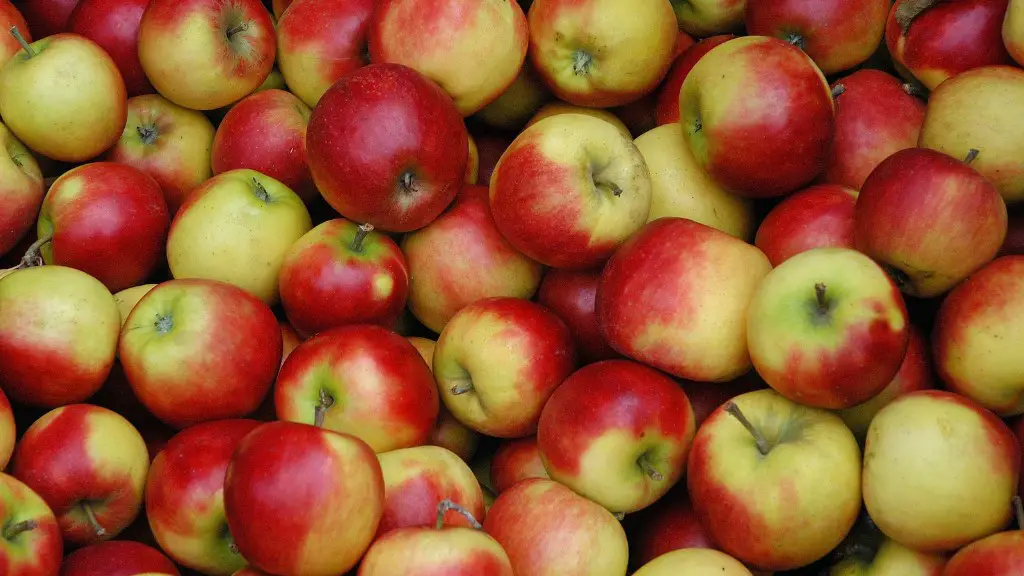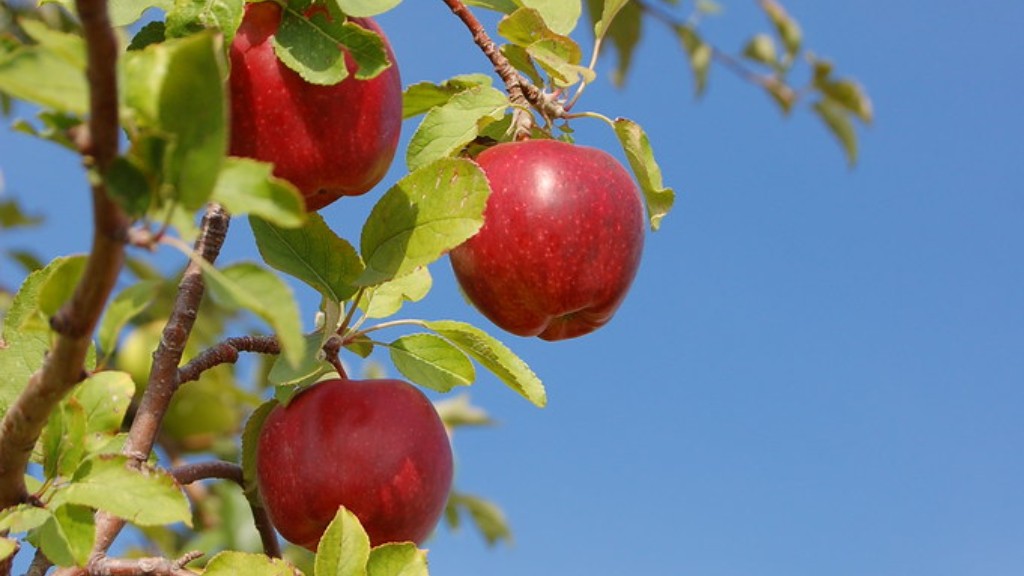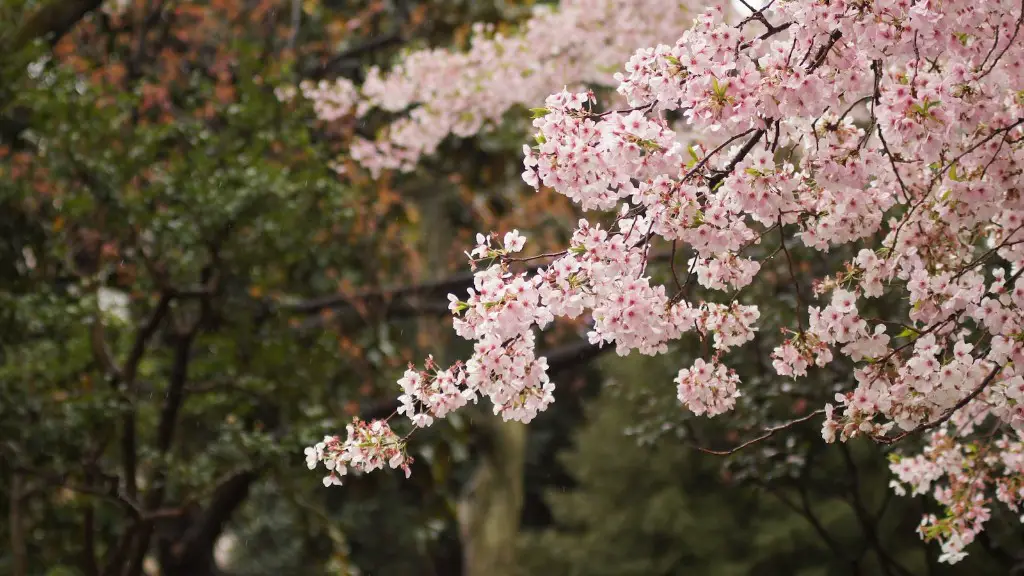Caring for a lemon tree during the winter season is critical for its success. Unlike other plants that become dormant during winter, a lemon tree needs supplemental care in order to produce a generous crop of luscious fruits. Here’s how to protect your lemon tree and ensure it produces a healthy harvest come spring:
1. Position the tree in an area that gets winter sunlight. A southern exposure is best, as it will move the tree closer to the winter sun. An area that receives some protection from the wind will also help the tree to stay warm.
2. Prune the tree to keep it at a manageable size. Pruning encourages better air circulation and allows more sun and warmth to reach the center of the tree. Make sure to prune only the dead branches and don’t remove more than 1/3 of the canopy on any given year.
3. Mulch the tree to help insulate the soil. Mulch conserves soil moisture and helps keep roots warm during the colder months. Choose a mulch that is organic and 2 to 3 inches thick.
4. Fertilize the tree with a nitrogen-based fertilizer. Fertilizers with higher nitrogen content help encourage the development of flowers and fruits. Apply the fertilizer once a month during the winter months.
5. Water your tree only when the soil is dry. Too much water can cause root rot, while too little water can create stress that can make it more susceptible to disease. Monitor the soil moisture and water as necessary.
6. Monitor for pests and diseases. Cold temperatures can make trees more prone to attack from pests and diseases, so be vigilant. Inspect the tree for any signs of insect damage, and prune away any affected branches if needed.
7. Protect the tree from freezing temperatures. If temperatures dip below freezing, consider covering the tree with a sheet or blanket to protect it from freezing temperatures. Make sure to remove the sheet or blanket once the temperature rises in order to let the sun reach the tree.
Hot Weather Care
As winter turns to summer, the lemon tree requires special care to protect it from the heat. Here are a few tips to help keep your lemon tree healthy and productive during the hot summer months:
1. Position the tree in a sunny spot with protection from the wind. The sun will keep the tree warm while the wind will keep it cool.
2. Prune above the fruit to promote better air circulation and to encourage the development of flowers and fruits.
3. Avoid excessive mulching as this can make it more difficult for the soil to absorb water, leading to root rot.
4. Fertilize regularly with a balanced fertilizer that is high in nitrogen.
5. Water regularly to prevent drought stress. Monitor the soil to ensure that it is moist but not wet.
6. Monitor for pests and diseases, particularly during very hot weather.
7. Provide plenty of shade if temperatures get too hot.
Watering
Watering correctly is essential for keeping your lemon tree healthy and productive. Here are a few tips to make sure that your citrus tree gets the water it needs:
1. Water thoroughly and deeply when it’s time to water the tree.
2. Avoid watering frequently as this can lead to root rot and waterlogged soil.
3. Monitor the soil moisture to see when it’s time to water again.
4. Move the sprinkler or hose to different areas around the tree to make sure that all areas are getting enough water.
5. Overwatering can be just as bad as underwatering, so make sure to keep an eye on the soil moisture levels in order to avoid giving your tree too much water.
6. Make sure that your tree is getting enough water but not too much by checking for signs of wilt or yellowing of leaves.
7. Water the tree during the morning instead of the evening in order to prevent the water from sitting on the leaves overnight.
Feeding
Feeding your lemon tree the right kind of fertilizer is essential for optimal growth and production. Here are a few tips on how to feed your tree correctly:
1. Use a balanced fertilizer that is high in nitrogen right before flowering or once a month during the rest of the year.
2. Apply the fertilizer carefully, making sure to keep it away from the stem and trunk of the tree.
3. Spread the fertilizer evenly around the root area of the tree, making sure to leave a 6-inch gap from the trunk and stem.
4. Water the fertilizer into the soil in order to encourage it to be absorbed by the roots.
5. Avoid overfertilizing as this can lead to root burn and other problems.
6. Coating the leaves with fertilizer can also damage the leaves and the tree, so make sure to keep the fertilizer away from the leaves.
7. Check the leaves for signs of yellowing or damage that may indicate that the fertilizer is burning the leaves.
Fungal Diseases
Fungal diseases can be a problem for lemon trees if not addressed quickly. Here’s how to keep fungal diseases from damaging your lemon tree:
1. Prune away any affected branches and fruits as this will help prevent the disease from spreading.
2. Check for signs of fungal activity such as white, powdery spots on the leaves.
3. Clean up any fallen leaves or fruits as this will help to prevent the disease from spreading further.
4. Remove any infected branches and dispose of them away from the tree.
5. Treat the tree with a fungicide to help control the spread of the disease.
6. Avoid watering the foliage of the tree as this can promote fungal growth.
7. Monitor the tree closely for any signs of new fungal growth.





